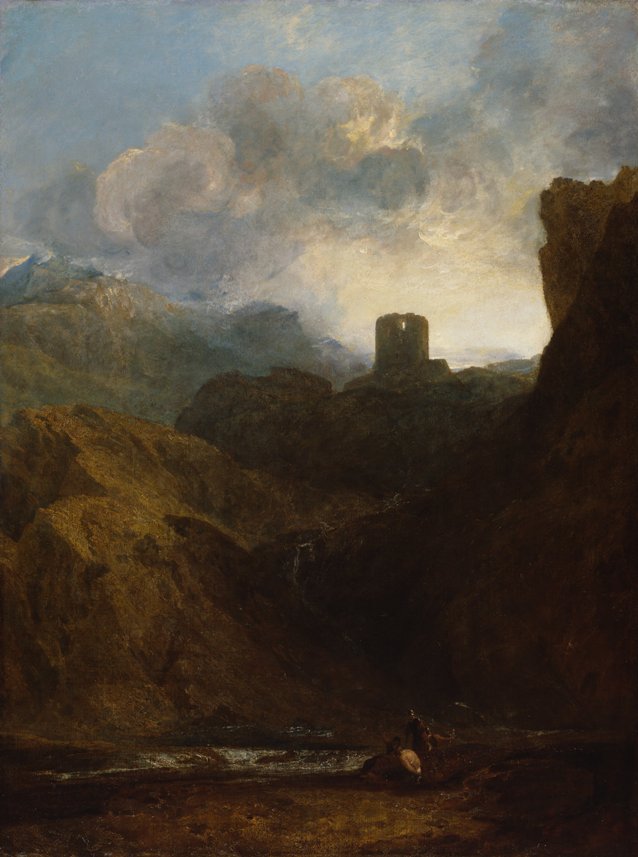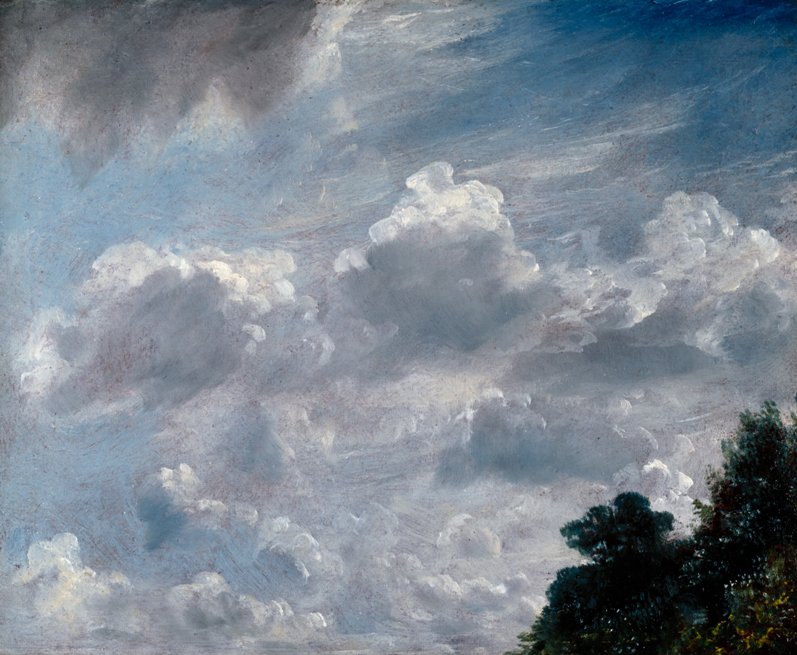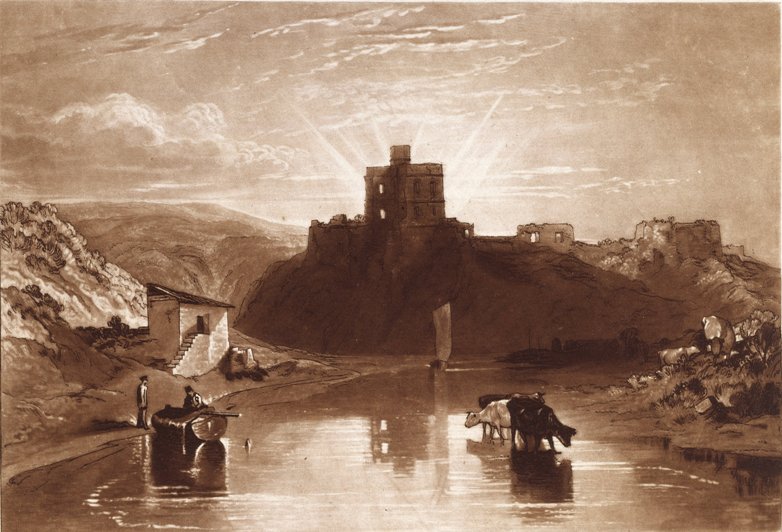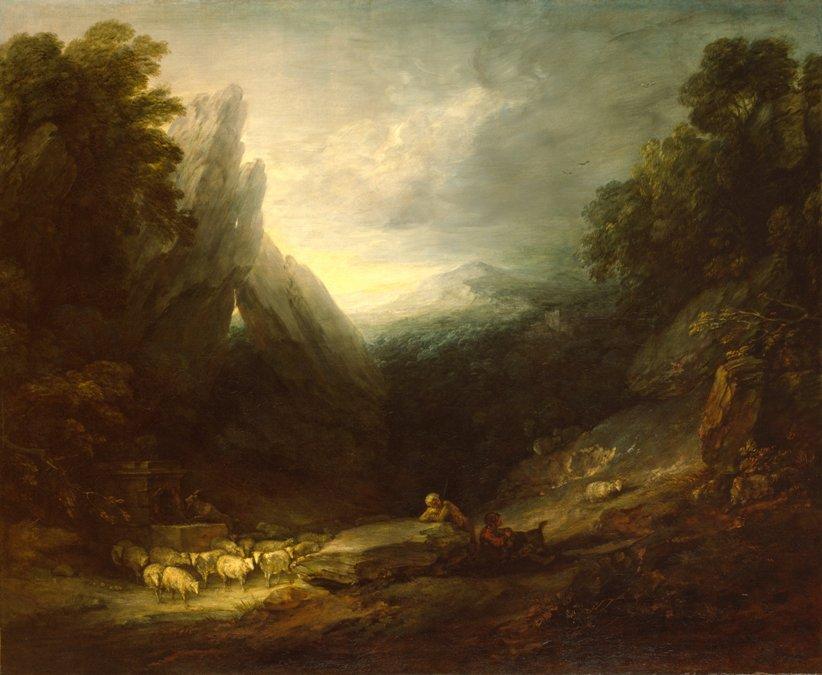All roads start from Rome, and so it proves in this challenging exhibition put together from the holdings of the Royal Academy’s art collection, archives and library. It features 17th-century Italian paintings – some of the grandest by the French artists who settled in Rome, and took inspiration from the surrounding campagna – brought back to Britain by the Grand Tourists who, in the midst of their various adventures, amassed substantial art for their stately homes.
The images by the likes of the two Poussins (Nicolas, and his brother-in-law Gaspard Dughet, so often confused), Claude Lorrain and the tempestuous Salvator Rosa were disseminated by means of highly technically accomplished and refined engravings, etchings and mezzotints to an increasingly wide audience of the cultivated and the artistic. This development helped to seed artistic vision in this country just in time for the founding of the Royal Academy in 1768 under the enlightened patronage of George III.
 Three pioneers are mostly represented here by reproductive prints: the Welshman Richard Wilson, who spent seven years in Italy, is typically labelled the father of British landscape painting (and was destroyed by drink); Thomas Smith of Derby, who has been forgotten by all but art historians; and Paul Sandby, topographer and watercolourist, memorialist of Windsor and its park who also travelled through much of England and Wales.
Three pioneers are mostly represented here by reproductive prints: the Welshman Richard Wilson, who spent seven years in Italy, is typically labelled the father of British landscape painting (and was destroyed by drink); Thomas Smith of Derby, who has been forgotten by all but art historians; and Paul Sandby, topographer and watercolourist, memorialist of Windsor and its park who also travelled through much of England and Wales.
The era did not simply create a taste for landscape for its own sake. The observed landscape – the canalised Suffolk landscape in Constable’s marvellous A Boat Passing a Lock, and his great six-footer The Leaping Horse (main image) – was always marked by man, by buildings, architectural features and, even in Gainsborough’s brooding and atmospheric Romantic Landscape, a load of sheep. People appear too, often appropriately mythologised, as in Wilson’s inspirational The Destruction of Niobe and Her Children, here in a 1761 engraving by William Woollett. Turner’s Welsh-set Dolbadern Castle, 1800 (pictured above right), painted when he was 25, was his Diploma painting, the artwork all Academicians have to deposit on election. He was a true prodigy, a student at the RA Schools at 14 and elected early. By contrast Constable was a late developer, concerned that landscape was not as prestigious as history painting. But here his cloud studies enchant - he was as fascinated by clouds as Turner was by the sun. (Pictured below left: Constable's Cloud Study, Hampstead, Tree at Right, 1821).
 The visual genius of Turner and Constable is revealed in both a passionate, obsessive attention to landscape - symbolic, observed, painted, drawn, and reproduced in print by themselves and others (the last being a nice little earner). They were fully aware of both past and present, entering into the debates concerning the sublime or the romantic as the emotional moods sought in landscape. There were arguments too about cultivating the picturesque, or what kind of beauty was to be sought. Turner admired Wilson, even seeking out his grave to offer homage.
The visual genius of Turner and Constable is revealed in both a passionate, obsessive attention to landscape - symbolic, observed, painted, drawn, and reproduced in print by themselves and others (the last being a nice little earner). They were fully aware of both past and present, entering into the debates concerning the sublime or the romantic as the emotional moods sought in landscape. There were arguments too about cultivating the picturesque, or what kind of beauty was to be sought. Turner admired Wilson, even seeking out his grave to offer homage.
Gainsborough meanwhile felt trapped by portraiture, the genre that made his name, professing a passionate love of landscape even if many of his images were based on observation filtered at times almost unrecognisably through imagination. Here was an intellectual romp carried out energetically in the invention of new kinds of imagery, inspired too by an understanding of Dutch rusticities.
 All this is on the walls of the RA, complemented by personal memorabilia: Turner’s fishing rod, not to mention his travelling watercolour box, Constable’s palette, letters from Gainsborough to other artists. The holdings of the RA are rich and various, and not always on view, so this reminder of the collections and archival scholarship which underlies this artists’ collective is welcome, including portraits of Gainsborough, Turner and Constable.
All this is on the walls of the RA, complemented by personal memorabilia: Turner’s fishing rod, not to mention his travelling watercolour box, Constable’s palette, letters from Gainsborough to other artists. The holdings of the RA are rich and various, and not always on view, so this reminder of the collections and archival scholarship which underlies this artists’ collective is welcome, including portraits of Gainsborough, Turner and Constable.
And as is all too visible, the major trio at the RA all exploited printmaking in various ways to disseminate their work, and enlarge their earnings. (Pictured above right: Turner's Norham Castle on the Tweed, 1816, etching and mezzotint). The examination of the burgeoning of landscape as a subject in its own right, and not always needing a leavening of myth or history to be taken seriously, is fascinating. But oh for some marvellous bursts of painting to alleviate a seemingly endless procession of beautifully detailed and meticulous prints: they make their point – again and again.









![SEX MONEY RACE RELIGION [2016] by Gilbert and George. Installation shot of Gilbert & George 21ST CENTURY PICTURES Hayward Gallery](/sites/default/files/styles/thumbnail_125_x_125_/public/mastimages/Gilbert%20%26%20George_%2021ST%20CENTURY%20PICTURES.%20SEX%20MONEY%20RACE%20RELIGION%20%5B2016%5D.%20Photo_%20Mark%20Blower.%20Courtesy%20of%20the%20Gilbert%20%26%20George%20and%20the%20Hayward%20Gallery._0.jpg?itok=3oW-Y84i)





Add comment